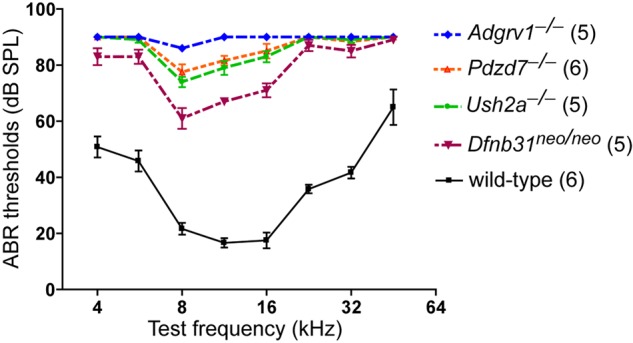Figure 9.

Adgrv1−/−, Ush2a−/− and Dfnb31neo/neo mice have different degrees of hearing loss. Hearing function of 1-month-old Adgrv1−/−, Ush2a−/− and Dfnb31neo/neo mice was assessed by ABR tests at frequencies of 4, 5.6, 8.0, 11.3, 16.0, 22.6, 32.0 and 45.2 kHz. Compared with wild-type controls, these mutant mice have significantly elevated ABR thresholds across all the frequencies tested (P < 0.01, 2-way ANOVA with post hoc tests). Threshold differences between Adgrv1−/− and Ush2a−/−, Adgrv1−/− and Dfnb31neo/neo, and Ush2a−/− and Dfnb31neo/neo mice are statistically significant (P < 0.01) at 5.6, 8.0, 11.3 and 16.0 kHz. Adgrv1−/− and Dfnb31neo/neo mice have the most and least severe hearing loss, respectively. For comparison, ABR results on Pdzd7−/− mice at P21–P28 are also shown here (24). Threshold differences between Ush2a−/− and Pdzd7−/− mice are not statistically significant at any tested frequency. Numbers in parentheses indicate numbers of animals tested. Error bars, standard error of the mean.
